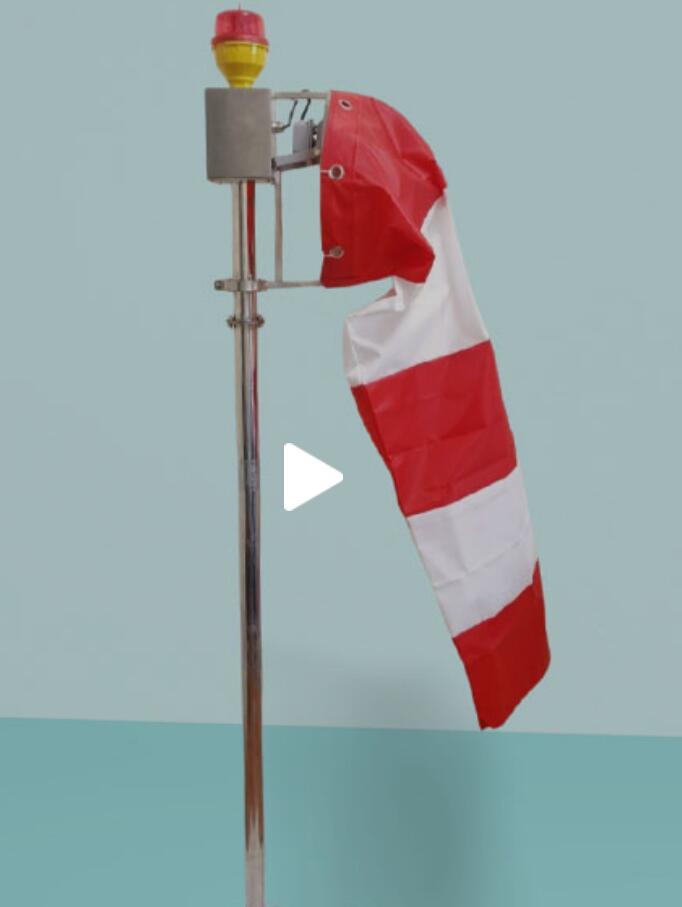Wind Cone Airport: The Unsung Hero of Runway Safety
At every airport worldwide, an unassuming yet vital device silently guides thousands of flights to safe landings - the wind cone airport installation. These fabric sentinels, often overlooked by passengers, provide pilots with critical real-time wind information that directly impacts takeoff and landing safety. More than just colorful decorations, wind cones serve as fundamental instruments in aviation meteorology, offering immediate visual cues about wind direction and speed that electronic systems can't replicate in simplicity and reliability.
The Critical Role of Airport Wind Cones
Pilot Decision-Making Tool
First visual reference during final approach

Essential for crosswind component assessment
Backup during instrument failures
Operational Necessities
Required by ICAO for all certified airports
Mandatory installation near runway thresholds
Part of standard visual guidance systems
| wind cone airport |
Design and Engineering Principles
Optimal Configuration
Standard 3.6 meter length for major airports
High-visibility orange/white alternating pattern
360° free rotation capability
Material Science
UV-resistant nylon fabric
| wind cones airport |
Aircraft-grade aluminum frame
Corrosion-resistant steel bearings
Strategic Placement Considerations
Airport Layout Integration
Multiple units along runway corridors
Elevated positions for maximum visibility
Coordination with other visual aids
Lighting Requirements
Medium-intensity white illumination
Nighttime visibility up to 3 nautical miles
Backup power provisions
Performance Characteristics
Wind Speed Indication
15° deflection = 5 knot breeze
30° deflection = 10 knot wind
Horizontal position = 15+ knot winds
Response Time Metrics
Reacts to wind changes in <3 seconds
Maintains position during gust variations
Dampening mechanisms prevent overswing
Maintenance and Reliability Standards
Inspection Protocols
Daily visual checks by ground crews
Monthly bearing lubrication
Annual structural integrity verification
Durability Factors
5-7 year typical service life
Fabric replacement every 2-3 years
Extreme weather resilience
Technological Integration
Modern Enhancements
LED illumination systems
Remote monitoring capabilities
Wireless synchronization networks
Smart Airport Applications
Integration with AWOS data
Digital twin modeling
Predictive wind analysis
Specialized Applications
Helipad Variations
Compact 1.2 meter designs
Dual-cone configurations
High-mobility portable units
Challenging Environments
Arctic condition modifications
Coastal corrosion protection
High-altitude adaptations
Future Development Trends
Advanced Materials
Self-cleaning fabric coatings
Carbon fiber reinforcement
Shape-memory alloys
Digital Integration
Augmented reality overlays
AI-powered wind prediction
Automated maintenance alerts
The humble wind cone airport installation continues to prove that sometimes the simplest solutions are the most enduring in aviation safety. As airports evolve with digital technologies and smart systems, these mechanical wind indicators maintain their essential role in pilot decision-making. Their perfect balance of simplicity, reliability, and immediate visual communication ensures wind cones will remain fixtures at runways worldwide, even as aviation enters its next technological revolution. In an industry where split-second decisions matter, these colorful fabric indicators provide pilots with the most intuitive wind information possible - a timeless solution to one of aviation's most variable challenges.
